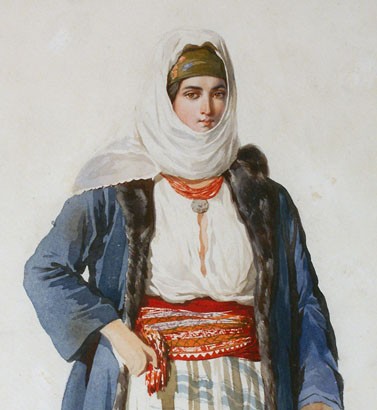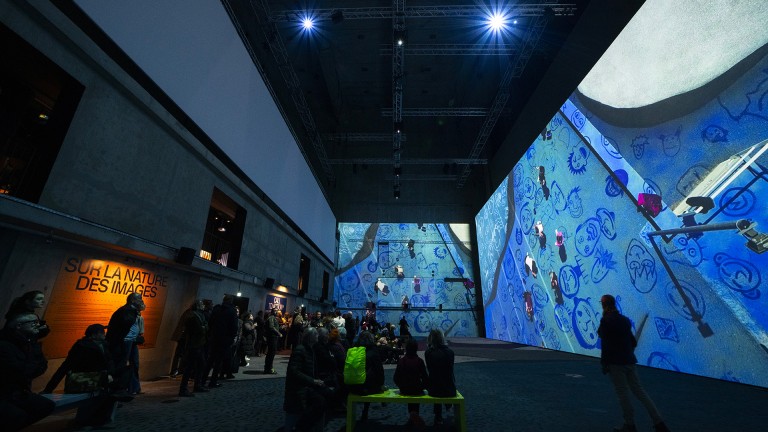Napoleon III and the Romanian Principalities
From 21 March 2009 To 29 June 2009
- Description
- Schedule
- Prices
This exhibition has been placed under the high patronage of the French President Nicolas Sarkozy and the Romanian President Traian Basescu.
An exhibition organised by the Réunion des Musées Nationaux, the Musée National du Château de Compiègne, the National Museum of Art of Romania and the French Institute of Bucharest.
On show in the National Museum of Art of Romania, Bucharest from 24 October 2008 until 1 February 2009.
If I were asked what interest France had in those distant lands watered by the Danube, I would answer that France’s interest is everywhere where there is a just and civilising cause to be upheld.
Napoleon III, 8 February 1860
Organised to celebrate the bicentenary of the birth of Napoleon III and, in Romania, in acknowledgement of the French presidency of the European Union, this exhibition focuses on the history of the creation of the Kingdom of Romania; it recalls the political and cultural links between France and the founding provinces of Moldavia and Walachia and the "providential" role played by Napoleon III in the construction of the Romanian nation state.
Traditionally a protector of Catholics in the Ottoman Empire and an ardent defender of the right of nations to self-determination, the Emperor of the French supported a policy of reorganising Europe that included the union of the two principalities, and their subsequent independence. France, whose influence in these regions had been felt from the eighteenth century, took a strong stance on the international stage as the arbiter of the new European equilibrium in a time of rising national feelings.
The process of creating the kingdom of Romania began with the Crimean War in 1853, a direct consequence of the Russian invasion of Moldavian and Walachian territories, vassals of the Ottoman Empire, and ended in 1881, after the death of Napoleon III in 1873. It took place in several stages. After the Treaty of Paris (1856) guaranteeing of the autonomy of the two principalities (which remained tributaries of the Ottoman Empire), Moldavia and Walachia were united through the double election of Alexandru Ioan Cuza (24 January/5 February 1859). Later Prince Charles of Hohenzollern-Sigmaringen led them to independence at the outcome of the war against the Sublime Porte in 1877-1878.
The exhibition looks at the cultural and artistic links between France and Romania during this period, the high point of which was the participation of the Romanian principalities in the Universal Exhibition of 1867 in Paris: a key event which decisively marked their march towards independence and brought them political and cultural recognition. But Franco-Romanian exchanges ran more deeply because of the princes’ personal sympathy for France: Prince Cuza, who had studied for a time in Paris, sought to imitate the French model in the organisation of the principalities. Prince Karol I had stayed in France on several occasions: in 1863, he was invited to the château of Compiègne by Napoleon III; in 1869, he visited the manufactories of the Gobelins and Sèvres and the Garnier Opera house.
The cultural round in Paris at the time was influenced by Romanian artists who had come to continue their education in France, men such as Theodor Aman, who later founded the Bucharest School of Fine Arts, Nicolae Grigorescu, Tattarescu, Pop de Szathmari, or the sculptor Ioan Georgescu. Other educated men also had an impact, in particular the doctor Georges de Bellio, an early supporter of Monet from whom he bought several canvases, including the famous La Rue Montorgueil, Holiday on 30 June 1878 now on display in Bucharest.
On the 150th anniversary of the union of Moldavia and Walachia, the founding entities of the Kingdom of Romania, this exhibition brings together some two hundred paintings (N. Grigorescu, Landscape with Rocks at Fontainebleau, Bucharest, MNAR), tapestries (Winterhalter workshop, Full-Length Portrait of Napoleon III, Compiègne), drawings, photographs and objets d’art (Treasure of Pietroasa, Bucarest, MNIR) on loan from thirty nine Romanian and French museums and institutions.
Curators at the Musée National du Château de Compiègne
Emmanuel Starcky, Director of the Musées nationaux et du domaine des châteaux de Compiègne et de Blérancourt;
Marie Lionnet, art historian
Curators at the National Museum of Art of Romania, Bucharest
Roxana Theodorescu, managing director;
Octav Boicescu, head of the European art department
Sponsored by Europe 1

Useful Information
Address
Musées et domaine nationaux du château de Compiègne
60200 Compiègne
Tel : +33 (0)3 44 38 47 00
Access
From Paris, 80 km, motorway A1, exit no.9, Compiègne sud (on the outskirts of Compiègne, towards Soissons)
By train, from Paris-Gare du Nord, 40 minutes. From Lille, 150 km, motorway A1, exit no. 10, Arsy
Open every day, except Tuesdays, 25 December and 1 January, from 10 a.m. to 12:30 p.m. and from 1:30 a.m. to 6 p.m. (last entries at 5:15 p.m.)
Lecture tours by appointment : +33 (0)3 44 38 47 02


